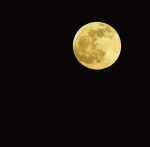![[Webb Space Telescope]](https://riverhouses.org/wp-content/uploads/2024/01/webb-telescope-logo-300x167.png) Three years ago this month the James Webb Space Telescope took up its permanent station out beyond the orbit of the moon and began to deploy its many mirrors and other instruments in anticipation of a long career of deep-space observation. We followed the Webb Telescope from its Christmas Day launch and we like to check in from time to time at the Webb Telescope website to see how things are going:
Three years ago this month the James Webb Space Telescope took up its permanent station out beyond the orbit of the moon and began to deploy its many mirrors and other instruments in anticipation of a long career of deep-space observation. We followed the Webb Telescope from its Christmas Day launch and we like to check in from time to time at the Webb Telescope website to see how things are going:
The Webb Telescope is a successor to both the Spitzer Space Telescope (launched in 2003 and now retired) and the venerable Hubble Space Telescope (launched in 1990 and still in operation). The Webb Telescope has a much larger mirror than Hubble and it is specially designed to record infrared light, allowing it to see farther back into the early stages of the universe.
![[Webb-Spitzer Image Comparison]](https://upload.wikimedia.org/wikipedia/commons/a/af/MIRI_test_image_of_the_Large_Magellanic_Cloud_-_Spitzer_vs_webb_LMC.png)
The Webb Telescope mission is just one of hundreds of NASA missions, past, present, and planned for the future, that you and your homeschool scientists can learn about. If you want a great regular science activity to do with your students, why not pick one of those missions and check in on it each month for news and new discoveries. You can find them all listed right here:
- ➢ Past NASA Missions (nasa.gov)
- ➢ Currently Active NASA Missions (nasa.gov)
- ➢ Planned NASA Missions (nasa.gov)
Most of the current and future mission websites have regular news releases, and some have special educational pages for students and the general public. Have a look around and find one that would match your homeschoolers’ interests today.
What celestial sights and astronomical apparitions have you and your students been exploring in your homeschool this Orion Term? 🔭
❡ All the star-sown sky: Teaching your students the major constellations and the names of the principal stars is one of the simplest and most enduring gifts you can give them. Our recommended backyard star guide and homeschool world atlas both contain charts of the constellations that will help you learn your way around the heavens. Find a dark-sky spot near you this month and spend some quality homeschool time with your students beneath the starry vault. ✨
❡ Star bright: If you’d like some light and easy homeschool astronomy lessons, download and print a copy of our annual River Houses Star Calendar and follow along with us month by month as we make twelve heavenly friends-for-life over the course of the year. 🌟
❡ Watchers of the skies: This is one of our regular Homeschool Astronomy posts. Subscribe to our free River Houses newsletter to get more great homeschool teaching ideas delivered right to your mailbox every week. 🔭
❡ Homeschool calendars: We have a whole collection of free, printable, educational homeschool calendars and planners available on our main River Houses calendar page. They will help you create a light and easy structure for your homeschool year. Give them a try today! 🗓
❡ Support our work: If you enjoy our educational materials, please support us by starting your regular Amazon shopping from our very own homeschool teaching supplies page. When you click through from our page, any purchase you make earns us a small commission at no extra cost to you. Thank you for helping us to keep going and growing! 🛒
❡ Join us! The aim of the River Houses project is to create a network of friendly local homeschool support groups — local chapters that we call “Houses.” Our first at-large chapter, Headwaters House, is now forming and is open to homeschoolers everywhere. Find out how to become one of our founding members on the Headwaters House membership page. 🏡



